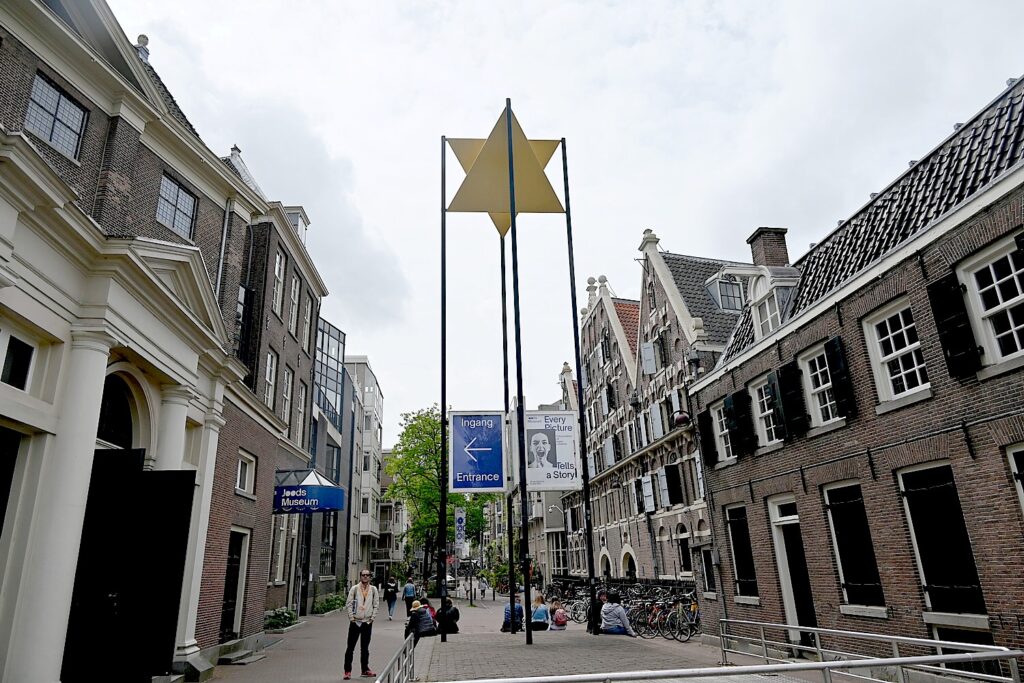
By Karen Rubin, Travel Features Syndicate, goingplacesfarandnear.com
I have cleverly arranged an extra day in Amsterdam after the eight-day BoatBikeTours Bruges-to Amsterdam bike trip, and I can’t afford to miss a minute. So after checking into my five-star luxury historic hotel, Sofitel Legend the Grand Amsterdam Hotel, marveling at my room (actually a suite), and having the concierge help purchase a timed ticket to the Rijksmuseum, I immediately set out.
In fact, I realize too late that it was necessary to pre-purchase timed tickets to major sites in Amsterdam – Anne Frank House is booked (you have to purchase weeks in advance). So I set out myself to see as much as I could – and in the course of the day, wind up exploring on foot just about all Amsterdam’s historic district neighborhoods. And since I can’t get into the Anne Frank House, I head to the Jewish Quarter (the Anne Frank House is not actually in the Jewish Quarter), which proves a wonderful and satisfying adventure in many ways.
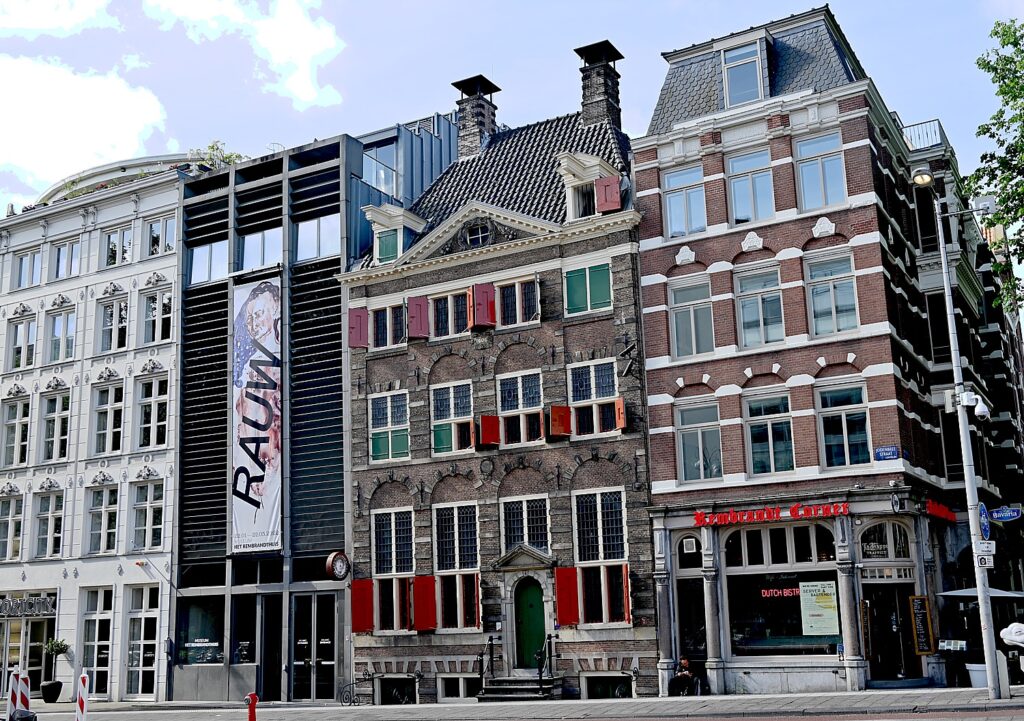
My first stop is most remarkable: The Rembrandt House. This is Rembrandt van Rijn’s actual townhouse, which may surprise people to learn is on a street that used to be in the center of Jewish life in Amsterdam. Although Rembrandt was not Jewish, his paintings often reflect his life among the Jews in the city – scenes from the Old Testament and many portraits of the Jewish people who lived around him. But what is most remarkable are the insights into this master’s life and work and even his creative process as you go around the house, essentially restored and furnished in the way it was, when he lived here. The Rembrandthuis presents Rembrandt’s life, his epoch, an interesting collection of paintings by his contemporaries and his prints.
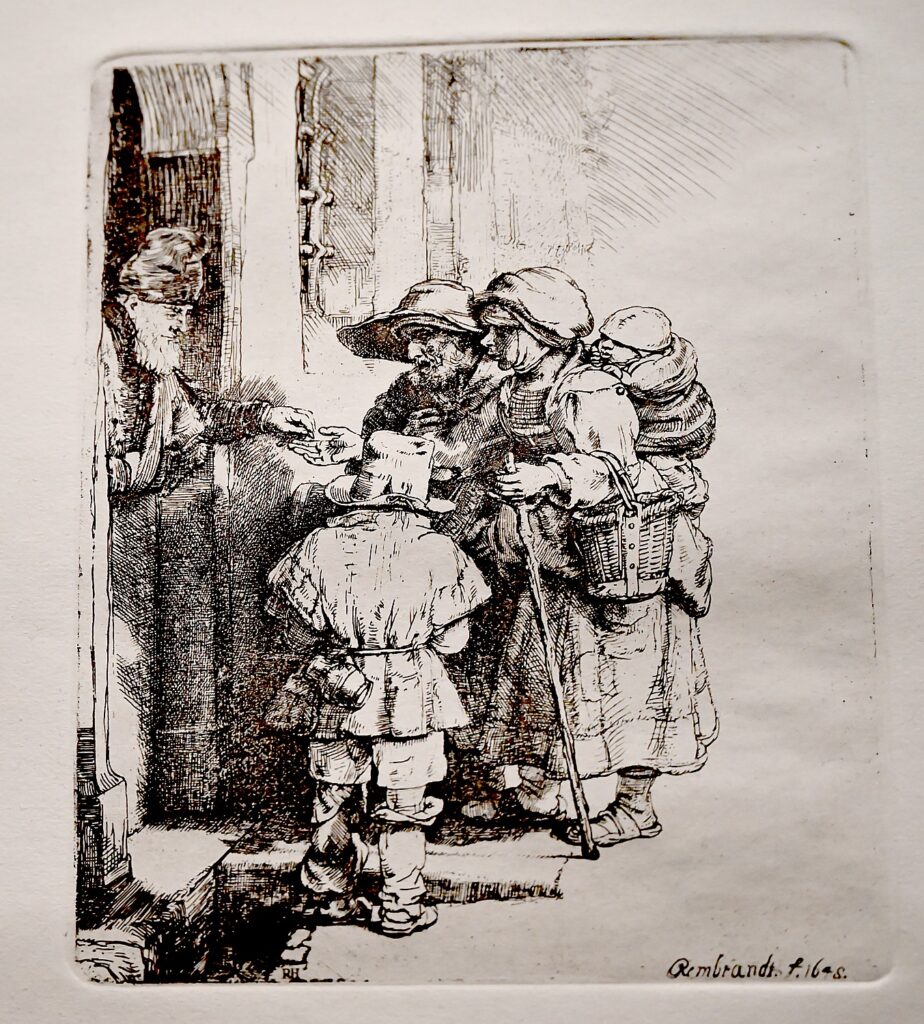
Rembrandt was doing well when he bought this townhouse, but when his fortunes turned and the house was sold, his possessions were inventoried – the museum recreates the house from that inventory as well as Rembrandt’s drawings, so they knew what was in specific rooms; the audio tour notes the objects (and you can get even more detail on many of the objects).
It is utterly fascinating to be in this space – his bedroom, his printing room (where you can lift leather coverings and see original etchings), his studio, his salon (actually a sales room). I learned that Rembrandt was an art dealer, and would have entertained clients in this parlor where there are a number of paintings on the wall as there would have been.
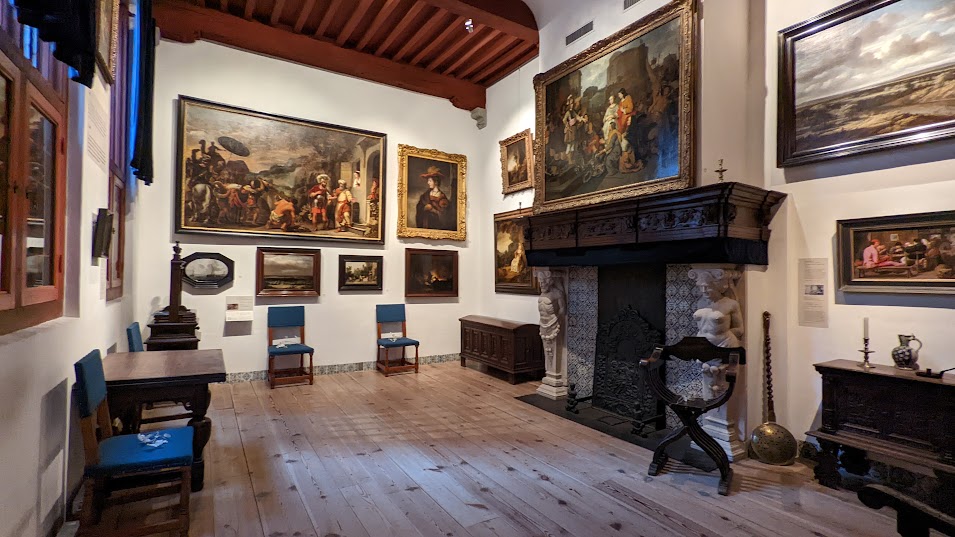
Rembrandt “would receive his clients with a glass of chilled wine from a marble wine cooler. On the walls hung dozens of paintings from which the client could choose. Rembrandt sold his own works and works by his many pupils. He also dealt in paintings by other masters. This was common practice among artists at this time. Rembrandt had Flemish and Italian works in stock, but most of the paintings were by Dutch masters.”
You walk through with your own audio device which gives a really excellent tour (allocate at least an hour), and notes the personal aspects, and you can point the sensor to a number and hear more details, like about the painting of an old man with bears, which was by one of his students).
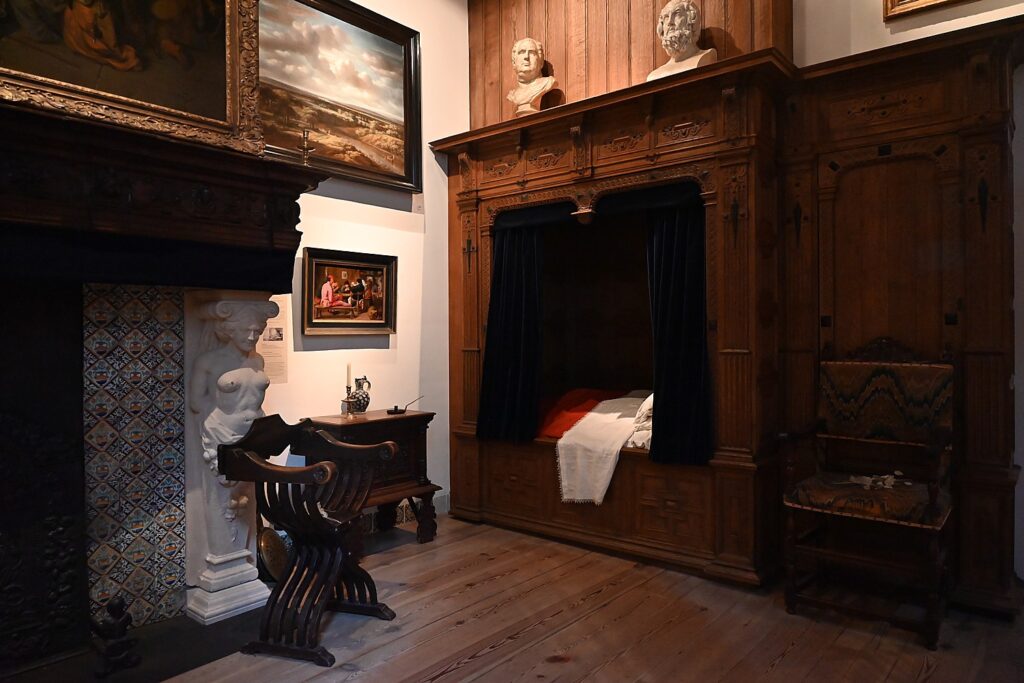
“We know from paintings his wife was lying on the bed – she died at 29 giving birth to their son.”
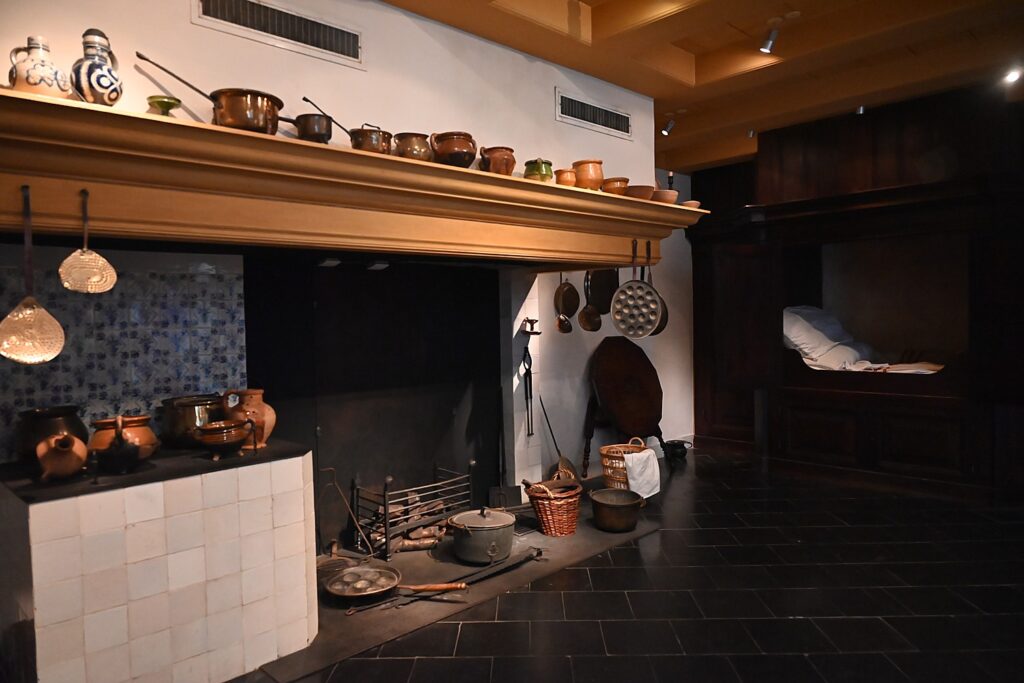
In the kitchen, we see a stove which would have been an innovation in his day.
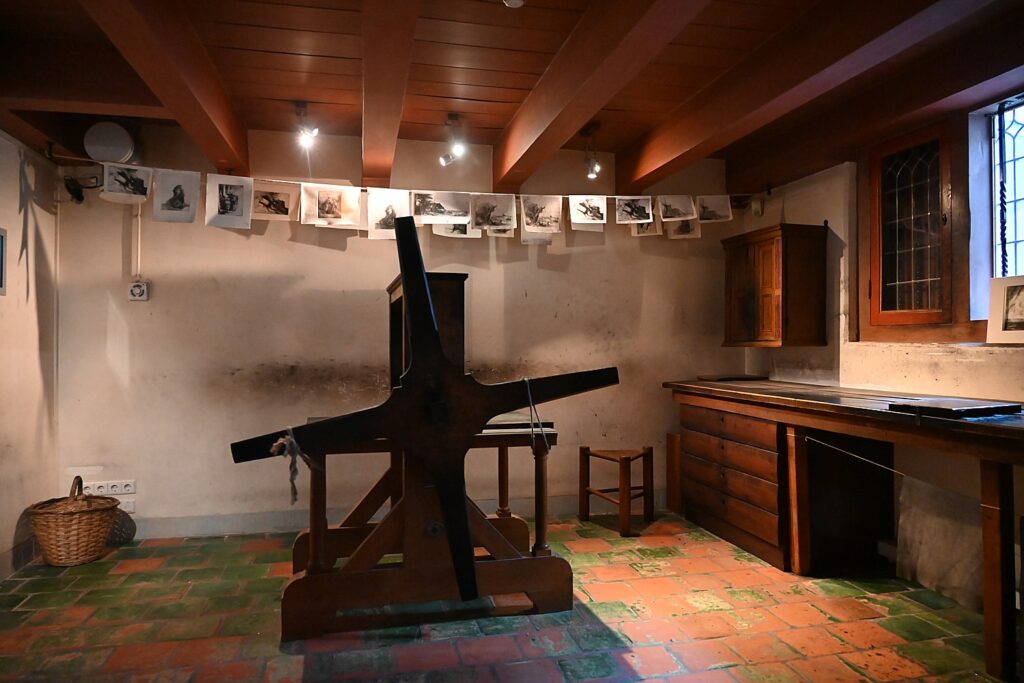
Rembrandt was ‘a ground-breaking etcher” and my favorite room is his print shop where we can see original etchings (they are put under leather covers in a darkened room to best preserve them, and are rotated every three months ). It is absolutely thrilling to see.

We go into a studio where Rembrandt taught art students – you could have been a Rembrandt pupil for 50 guilders a month (he had 40 students). “They would already have had a basis in art.”
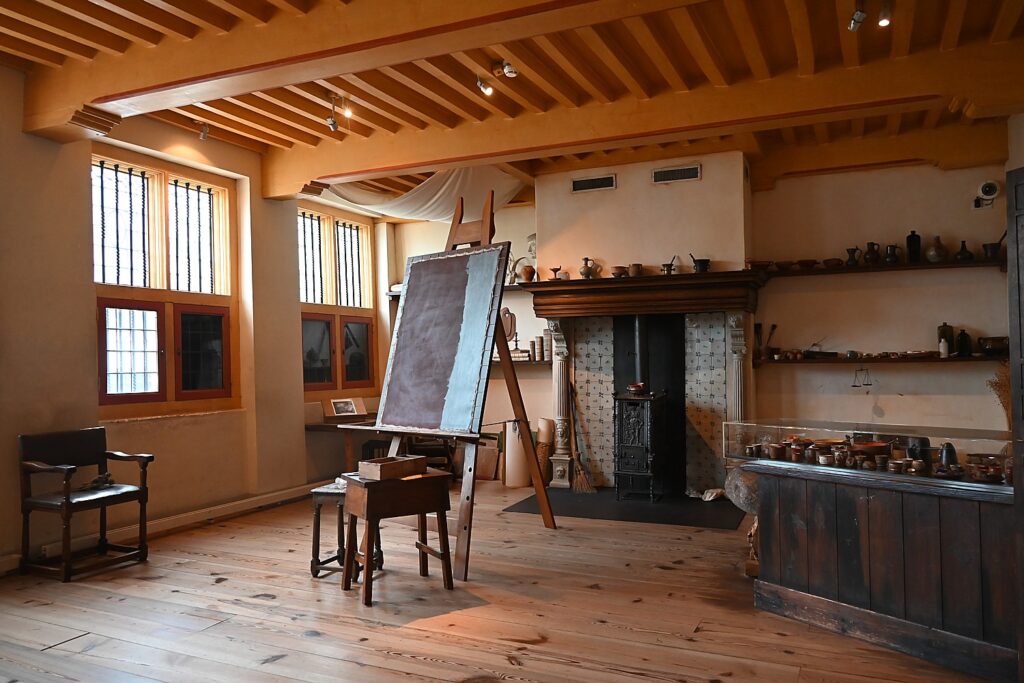
Rembrandt had two mistresses after his wife, Saskia van Uylenburgh, died at the age of 29, giving birth to their son.
The first was his housekeeper and nanny to his son and they developed an intimate relationship. She wanted to marry; Rembrandt couldn’t because under the terms of his (wealthier, noble) wife’s will, his inheritance would have reverted to her other relatives. So when he couldn’t marry, she sued him for a very large amount of alimony. He had her committed to a madhouse for five years.
Then he met Hendrickje Stoffels, very much younger than Rembrandt. They had a loving relationship, had children, and were together for 15 years until she died at the age of 38.
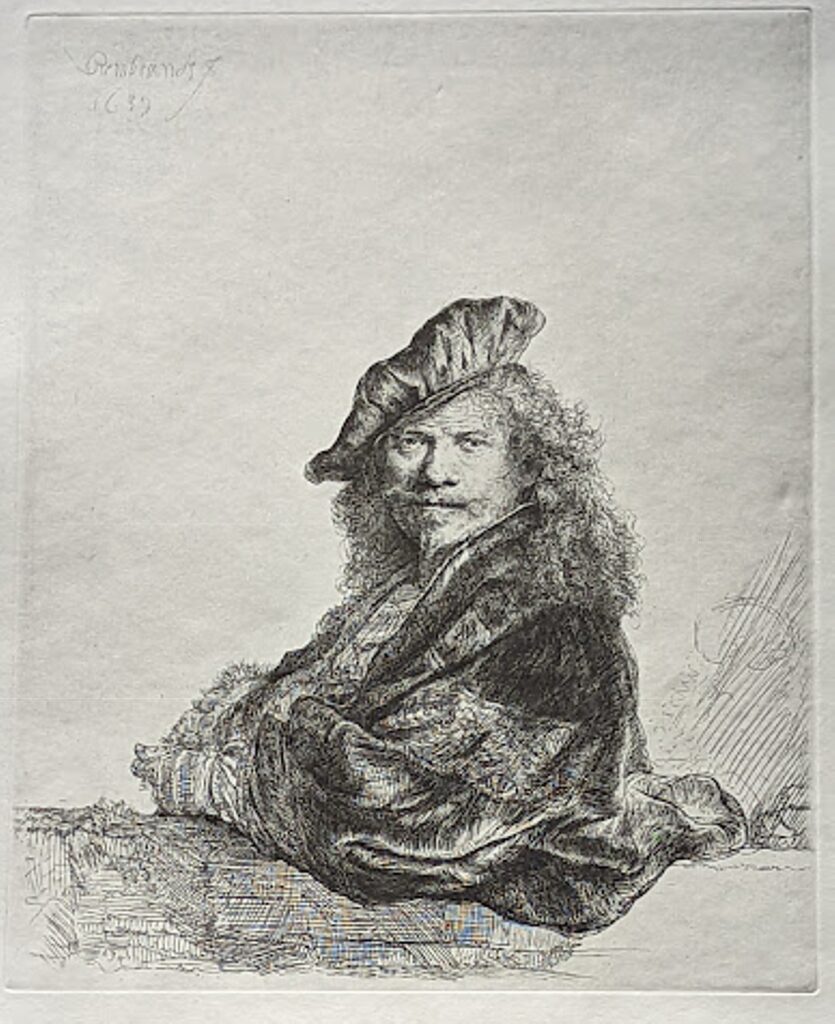
Rembrandt had 16 children but only three – a son and two daughters – survived to adulthood. His son became an art dealer, and after Rembrandt’s bankruptcy, rented a house for himself and father and his mistress, Hendrickje Stoffels. His son died one year before Rembrandt.
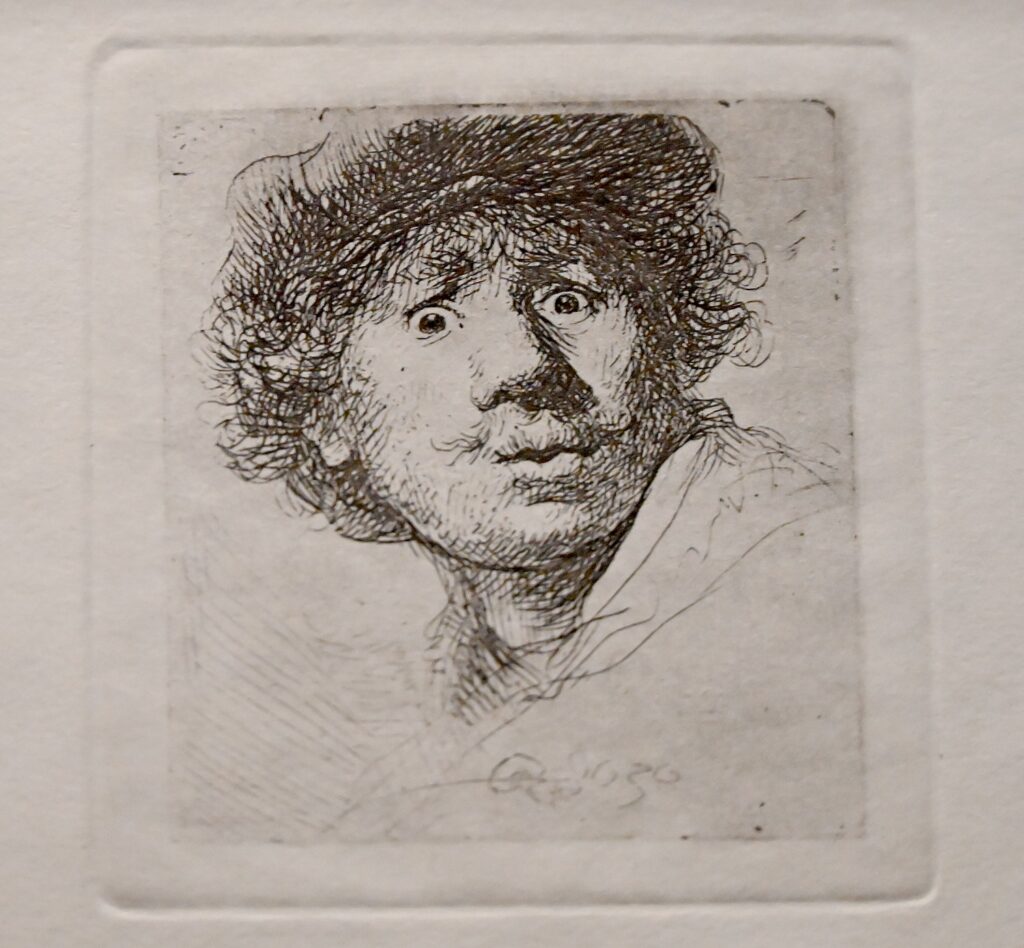
I ask how Rembrandt went bankrupt. “He spent too much. Also, ‘Nightwatch’ – the three people who paid the most for the painting were not well represented in the painting; it went around that Rembrandt wasn’t a good portrait painter and he lost commissions (100G, equivalent to yearly salary). With commissions down, he went bankrupt.” [Later, I get to ask the docent at the Rijksmuseum when I visit “Nightwatch” who disputes this account.]
The Rembrandt House museum has a broad collection of Rembrandt’s works, but only a small portion is on view at any one time (they rotate to preserve the art).
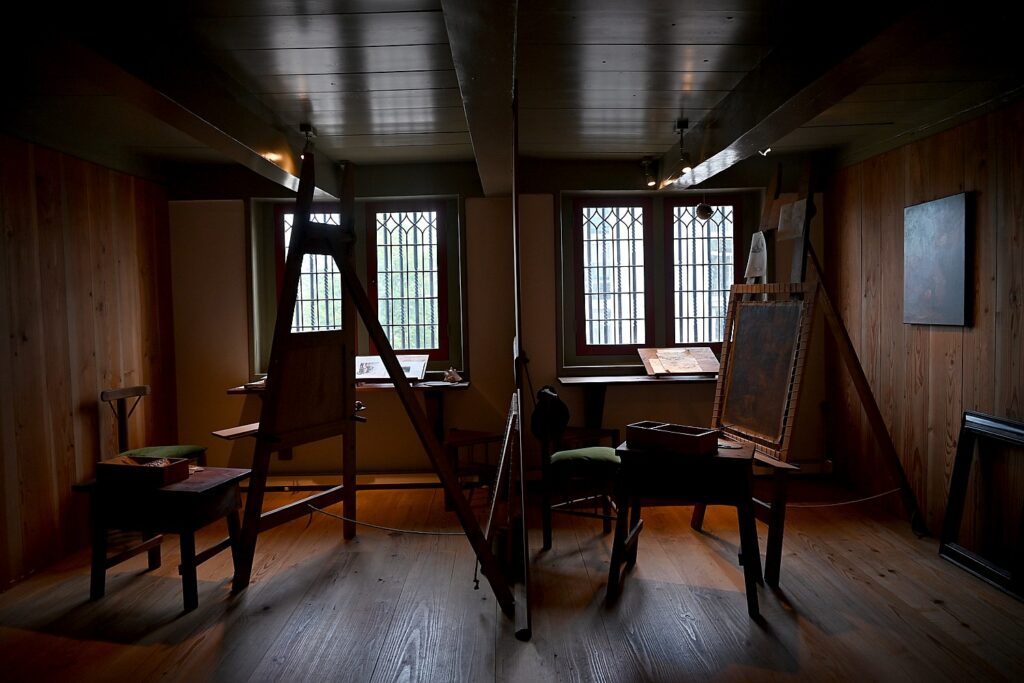
In the modern building that is attached, there are exhibitions of modern artists reinterpreting Rembrandt’s concept of painting people as they are, not idealized. (I don’t care for them at all).
I realize that though I so admired Rembrandt, I actually knew very little about who he was. You come away seeing, understanding Rembrandt in such a different light as you tour his house.
Rembrandt House, Jodenbreestraat 4, 1011 NK Amsterdam, +31 (0)20 520 0400, [email protected], www.rembrandthuis.nl/en/.
It’s Saturday and just near the Rembrandthuis there is a regular – and massive – Waterlooplein (Waterloo square) flea market, started ages ago by Jewish peddlers (one of the few occupations allowed to Jews) and today is the largest flea market in Amsterdam. It’s definitely fun to visit (www.amsterdam.info/markets/waterlooplein/)
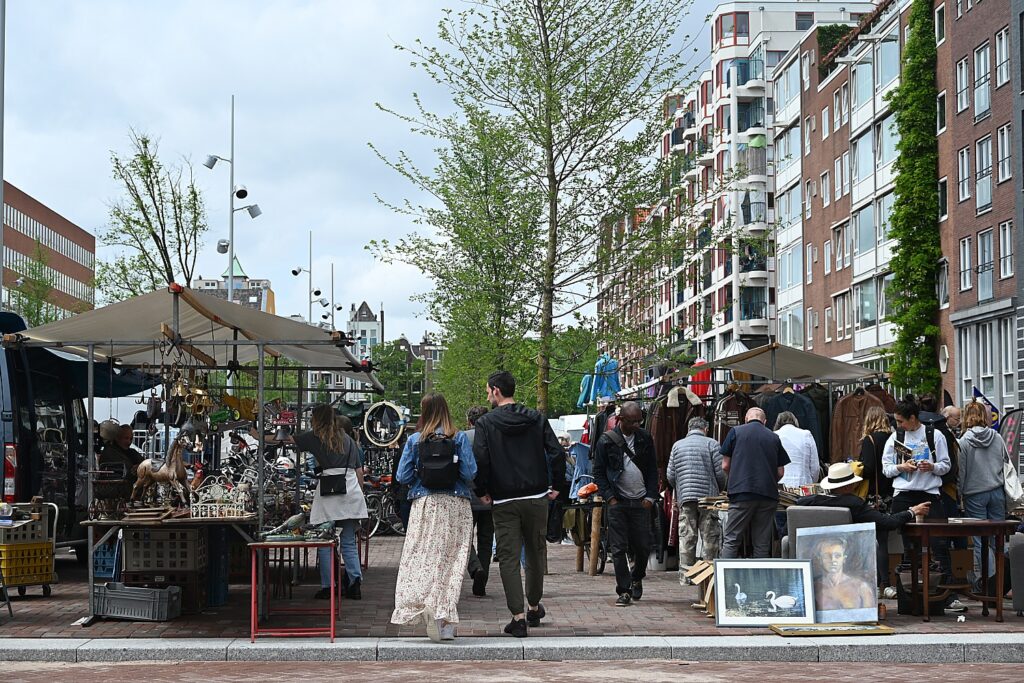
Even this early in the tourist season, Amsterdam seems pretty crowded with visitor s (especially in the Red Light District), but I set out to explore more of the historic Jewish Quarter where I find myself on a sort of hunt to locate sites. It seems more the “real Amsterdam” – less impacted by tourists – where I can time travel.
Peering Back at 350 Years in the Jewish Quarter

The Jodenbuurt (Jewish Quarter) was inhabited by the Jewish community for 350 years, from the late 16th century up to the Holocaust.
Jewish people, culture and religion became an important element of life in Amsterdam from the early 1600s. Several countries in Europe guided by the Catholic Church, starting from the 13th C, had laws aimed at expelling Jews. During the counter-reformation in the 16th C, persecutions of Jews increased. While subject to many restrictions, Jews were permitted to settle in Amsterdam and peacefully observe their religion.
In 1593, a century after the Spanish Inquisition, Sephardic Jews from Portugal and Spain settled in this neighborhood of Amsterdam. In the course of the 17th century Ashkenazi Jews from Central, Eastern, and parts of Western Europe also moved into the district. By 1602, the Jews started to build their first synagogues. And in the centuries that followed, many more synagogues opened.
The absolutely best place to start my odyssey is the Jewish Museum (previously known as the Jewish Historical Museum)
The Jewish Museum is the only museum in the Netherlands that focuses on Jewish history, religion and culture. The museum is set in a group of four 17th and 18th century Ashkenazi synagogues at the heart of the former Jewish quarter in the centre of Amsterdam. The permanent exhibition follows several themes: the role of religion and tradition, the links with Israel, the persecution of Jews during the Second World War, personal life stories and the mutual influence of Jewish and Dutch culture.

The main part of the museum is housed in the stunning Great Synagogue, the Ashkenazi “Gathering Place” that dates from 1671. The exhibits here are enlightening and inspiring.
Jewish Museum is more focused on the 350-year long history of Jews in Amsterdam. it’s about their migration and integration into Holland, though the period from 1900 to present is also on display in a very moving way, how they integrated into Dutch society, and how they thrived and contributed to the community when restrictions were lifted.
It’s a museum of stories and surprises – it’s uncanny how much personal information they have to connect with the portraits and personal effects on view – so much more meaningful than looking at paintings and artifacts. I especially loved seeing these gorgeous portraits of Jewish Amsterdamers from the 17th and 18th centuries, – how they looked like any other Amsterdamer of the time, a testament to how secular and assimilated people can come when they are free to interact in the broader society.
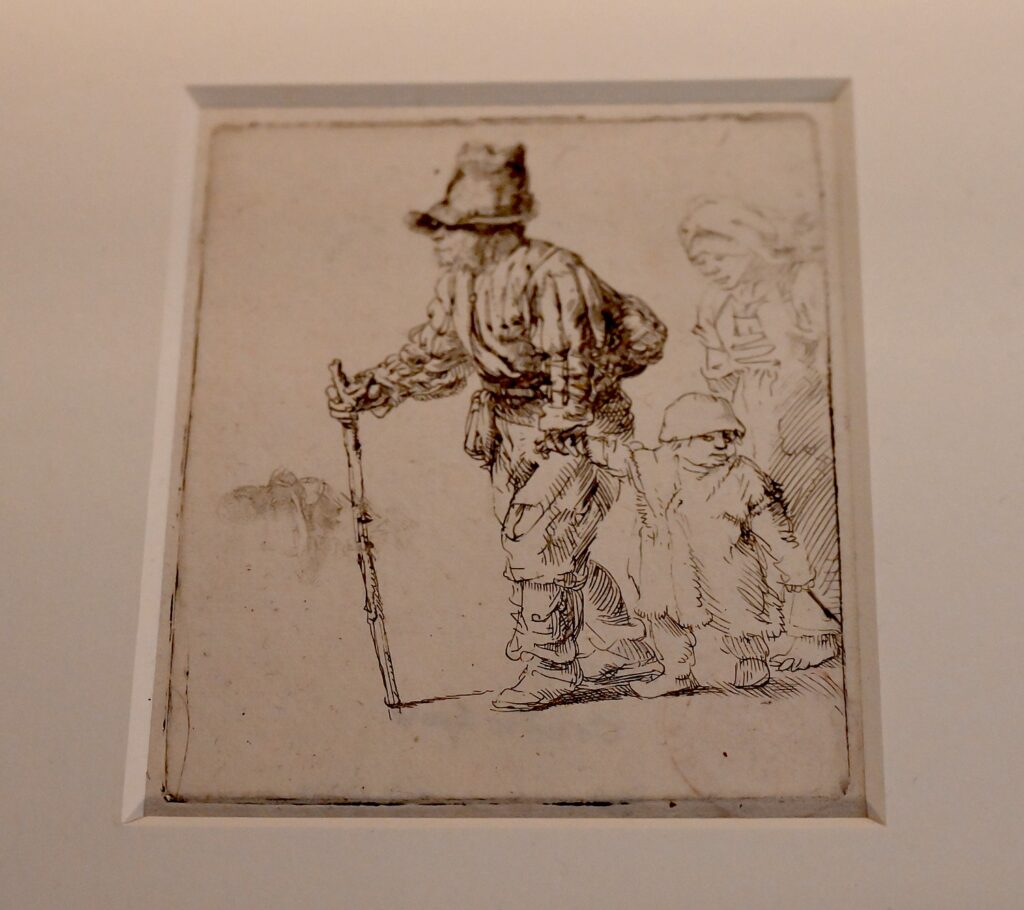
Here you see Rembrandt etchings of his Jewish neighbors but with canny personal detail. So attached to Rembrandt’s etching of a distinguished looking man, we learn, “This is the Sephardi doctor Ephraim Bueno (1599-1665). When he was a child, he and his parents fled Portugal to Bordeaux where studied medicine, then later settled in Amsterdam. Father and son gained a good reputation as doctors, both in Jewish and non-Jewish circles. Ephraim Bueno lived near Rembrandt, who etched his likeness.”
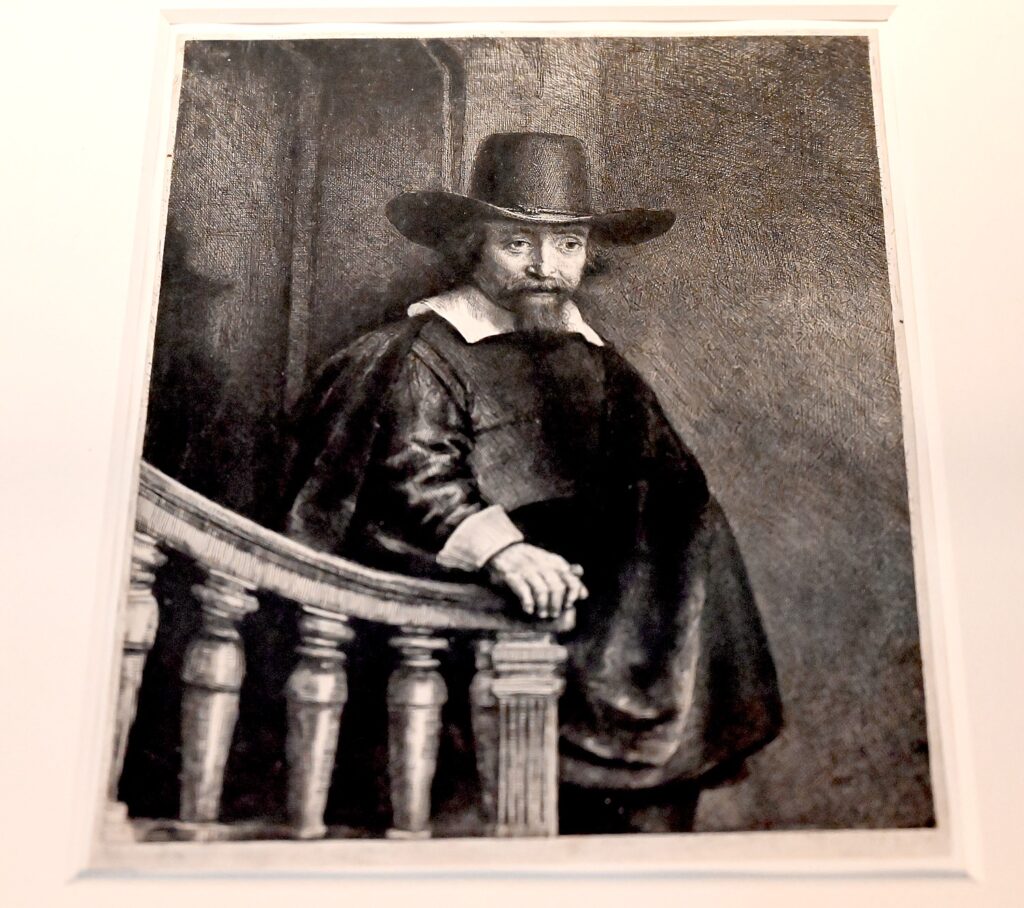
Amsterdam, a legendarily liberal city for sex, drugs (as today), was also comparatively liberal for Jews back in the day. William of Orange fought a revolution for religious freedom from Catholic Spain. Jews won comparative emancipation in the Netherlands in 1796.
The combination of economic success and a relatively tolerant religious environment – unusual in Europe – made Amsterdam attractive to foreigners.
Portuguese “New Christians” – descendents from the Jews from Spain and Portugal who were forced to convert but practiced secretly – found that here in Amsterdam, Jews could practice without having to wear distinguishing marks or live in ghetto. We meet several (in portraits) who took up again their Jewish lives once they settled in Amsterdam.
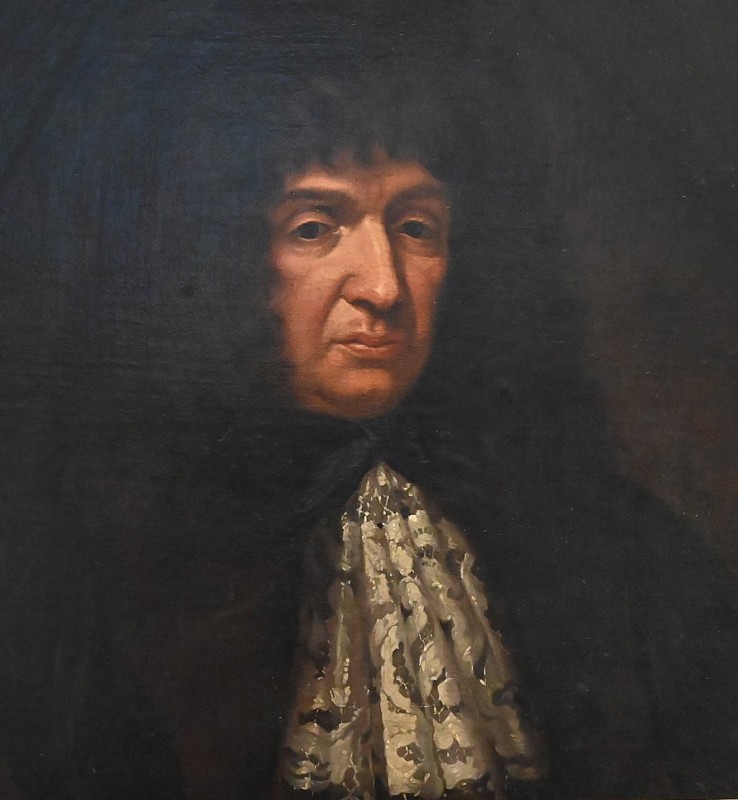
Amsterdam at the start of 18th C developed into the biggest, most important Jewish city in world. No other city had the synagogues of the size and majesty of the Great Synagogue and Portuguese Synagogue (the largest synagogue in the world) – which served as a symbol of liberation enjoyed by Jews here.
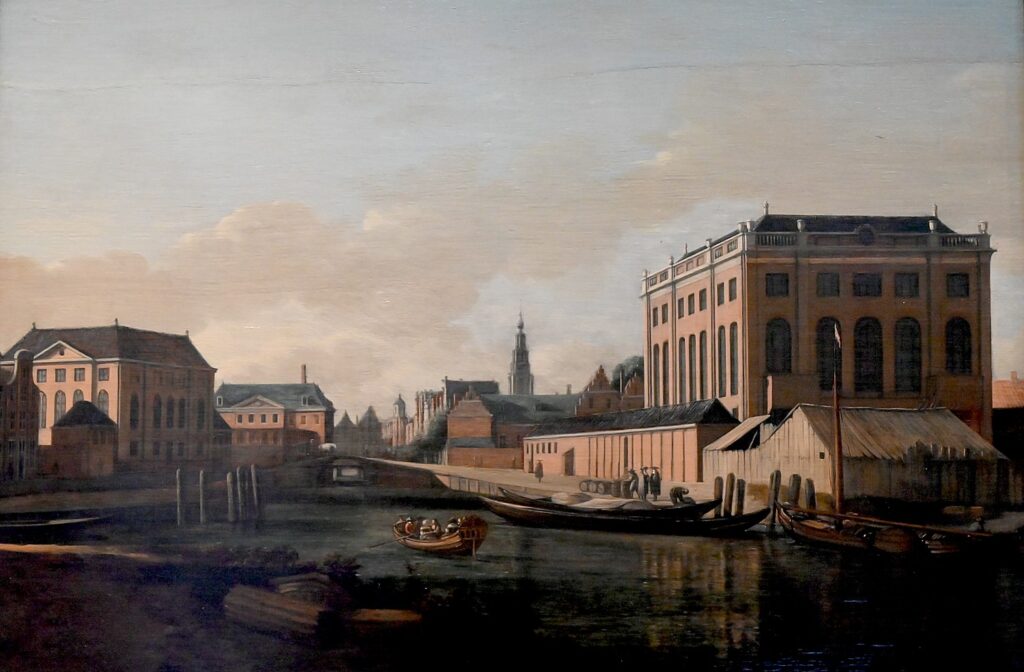
You walk through to another building, also a former synagogue, where the exhibit basically tells the “modern” story of Jews here, from 1900 to the present, and especially, the horrifying history of what happened to real people before, during and after the Holocaust.
When Nazi Germany invaded the Netherlands in 1940, there were 80,000 Jews living in Amsterdam (- approximately 10% of the city population. Throughout the years of German occupation not many survived. Almost all were deported and exterminated in Nazi concentration camps.
When the Nazis came, Jews tried to hide in basements, attics, secret rooms. Anne Frank is best known because of her diary.
Some 25,000 Jews went into hiding, of whom 18,000 survived, the rest were discovered or betrayed. ”Those in hiding often received help from non-Jewish acquaintances. Later on, resistance organizations set up a system: besides hiding places, they supplied ration cards and forged identity papers and arranged means of transport.
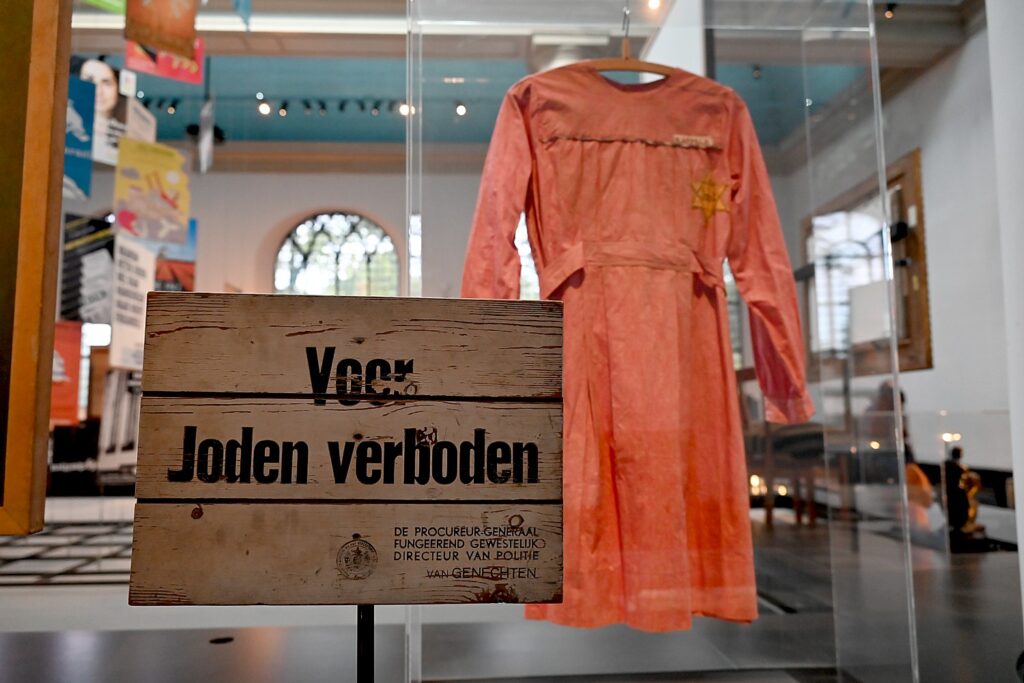
Hiding places ranged from back rooms and converted cupboards to sheds and ditches and carefully concealed holes in the ground. Jewish children were sometimes given new identities and assimilated into non-Jewish foster families.” Some were successful, most found out, betrayed, or gave up. On average, Jews in hiding paid 100 guilders a month for protection.
Some 30,000 Dutch Jews out of 140,000 survived the war, most of them by going into hiding. After the war ended only 5,200 Jews returned to Amsterdam from the camps, and the life of the city changed forever.
“Their repatriation to the Netherlands was a laborious process and they met with a cold and bureaucratic reception in their home country. Jews who returned were… scarcely received any support in trying to rebuild their lives. Survivors often had nothing left – their relatives and friends had been murdered and their possessions stolen. The government declined to take any measures to address the specific problems of the Jewish population, arguing that they did not wish to discriminate as the German occupying forces had done…. There was little interest in or understanding for the plight of survivors among the Dutch population, which was coping with its own poverty and distress.”
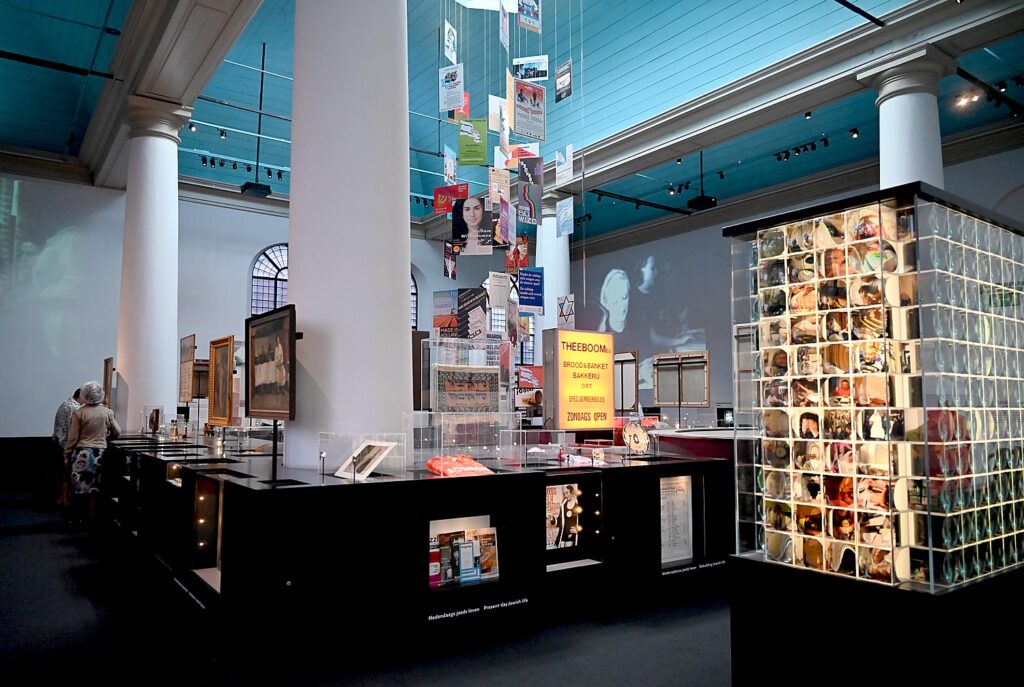
The perspective you get at the Jewish Museum is unusual – to see how the community lived for 350 years and then the aftermath holds lessons for today.
Today Jewish Amsterdam community numbers 20,000 persons, is well organized, has a rich religious and cultural life, nevertheless the old Jewish Amsterdam belongs to history.
The Jewish Museum also manages the Hollandsche Schouwburg, the Holocaust Memorial. The former theater was used during the Nazi occupation as a deportation center for Jews. Today it is a monument to the memory of those who died, with a special exhibition for school children. (It is being renovated with reopening expected beginning 2023). https://www.amsterdam.info/jewish/hollandsche_schouwburg/
At the Jewish Museum, I pick up a sheet describing a walking tour through the Jewish Cultural Quarter. I go off to follow much of the list. It is like a mystery tour, peeking back in time to people’s lives.
Jewish Museum, Nieuwe Amstelstraat 1, www.amsterdam.info/museums/jewish_historical_museum/. More information and to purchase tickets online, at www.jck.nl/en.
See also:
Sofitel Legend The Grand Amsterdam: Historic Hotel that Played Major Role in History
36 Hours in Amsterdam: Time-Traveling in the Jewish Quarter
36 Hours in Amsterdam: Time-Traveling Through Amsterdam’s Jewish Quarter
__________________
© 2022 Travel Features Syndicate, a division of Workstyles, Inc. All rights reserved. Visit goingplacesfarandnear.com, www.huffingtonpost.com/author/karen-rubin, and travelwritersmagazine.com/TravelFeaturesSyndicate/. Blogging at goingplacesnearandfar.wordpress.com and moralcompasstravel.info. Visit instagram.com/going_places_far_and_near and instagram.com/bigbackpacktraveler/ Send comments or questions to [email protected]. Tweet @TravelFeatures. ‘Like’ us at facebook.com/NewsPhotoFeatures
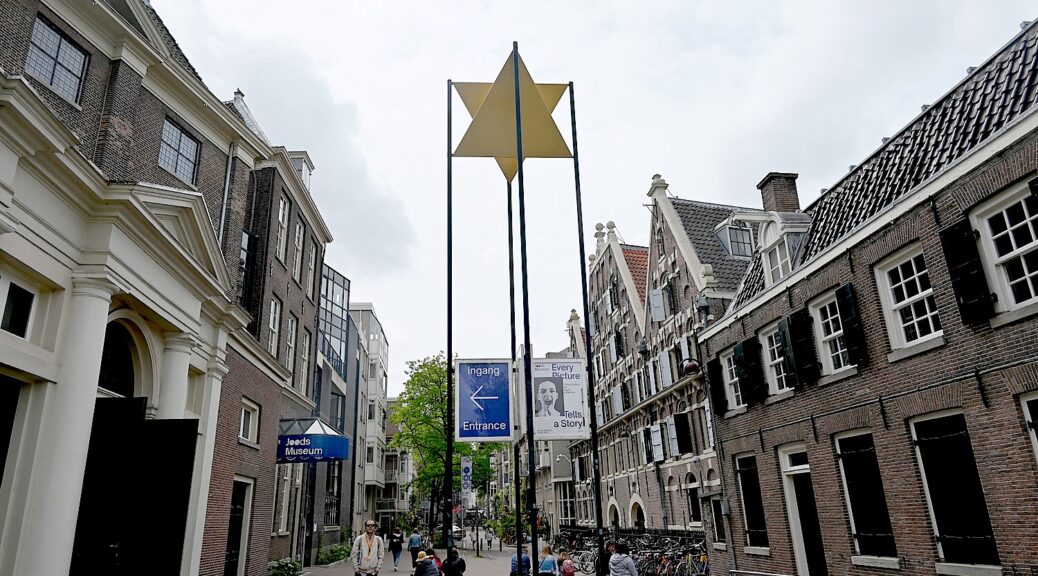
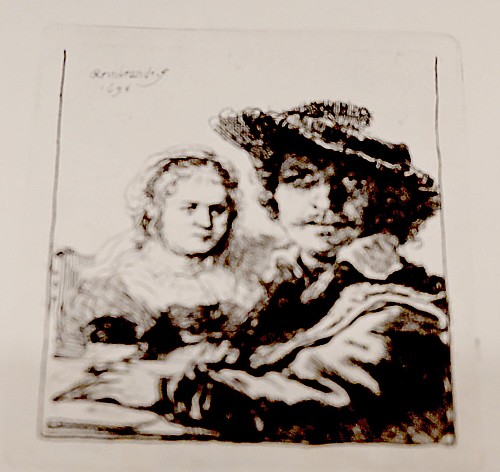

One thought on “36 Hours in Amsterdam: Time-Traveling in the Jewish Quarter”
Comments are closed.